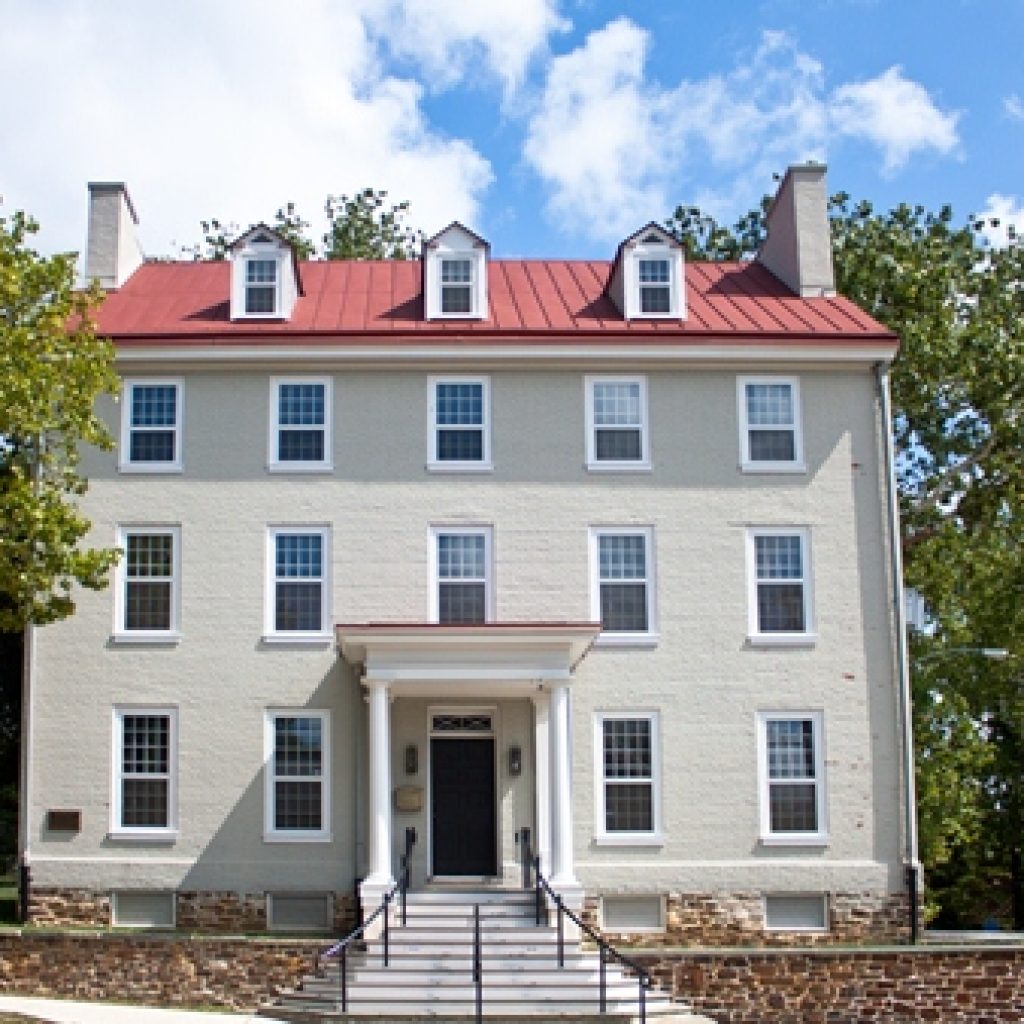Municipality: Bridgeton
Category: Residence, Single-Family
As you stand in front of this imposing Federal mansion, with its three-and-a-half story mass, columned portico, and double parapeted chimneys, it is hard to imagine that at the time of its construction in 1791, Bridgeton, then known as Bridgetown, was not much more than a village of only 300 people. Built by David Sheppard, a successful gentleman farmer from Back Neck, now part of Fairfield Township to the south of Bridgeton, the Sheppard House sits just north of the first bridge to cross the Cohansey River on Commerce Street.
David Sheppard passed away in 1827 and his youngest son, Isaac Sheppard inherited the mansion and built and operated a general store across the street. Around 1850, a group of Bridgeton men, concerned about a lack of educational opportunities for their daughters, rents the second floor of Isaac Sheppard’s general store, hired teachers from New England and starts a girls school. By the time the school is established, both Isaac’s first and second wife have passed away. His third wife, Margaretta Little, had attended Mount Holyoke Female Seminary (later College), the country’s first institution of higher learning for women. Opened in 1837, Mount Holyoke Female Seminary emphasized the importance of educating women and specialized in training educators.
In 1861, Margaretta Sheppard opened a school in the Sheppard House known first as Bridgeton Female Seminary, Family and Day School for Young Ladies and shortly thereafter as Ivy Hall Seminary. With the help of Isaac’s daughters she taught geometry, chemistry, moral philosophy, logic, crticism, composition, Latin, and French. The school lasted long after Margaretta’s death and was not just a school for area residents, drawing students from Louisiana, Missouri, Iowa, Illinois, Indiana, Washington, D.C., New York, Pennsylvania, and New Jersey.
One of the most notable women associated with Ivy Hall was Ada Howard, who after graduating from Mount Holyoke Women’s Seminary (now Mount Holyoke College), became the headmistress of Ivy Hall. After several years at Ivy Hall, Ms. Howard moved to Massachusetts and became the first President of Wellesley College, whose mission was to provide an excellent education for women who would make a difference in the world. In the words of the Wellesley College motto, Non ministrari sed ministrare (“Not to be ministered unto but to minister”). Ivy Hall was a venue for independent young women to teach progressive students the importance of women’s rights. One student, Ella Reeve, later Ella Reeve Bloor, became a Progressive Era leading light, working for temperance, women’s suffrage and workers’ rights.
Ivy Hall Seminary lasted until 1919 when it was sold to Dr. Reba Lloyd, becoming known as Ivy Hall Sanitarium. Dr. Lloyd was the first woman physician to establish a practice in Bridgeton and her sanitarium provided a full range of services, from maternity to caring for the terminally ill. Eventually, the sanitarium came under new management, but continued to operate as a senior retirement home well into the 1960’s.
In the 1970’s the mansion was renovated for use as a restaurant and operated under various names and owners into the late 1980’s. During the 1990’s the building fell into vacancy during a protracted bankruptcy and eventually was obtained by the City of Bridgeton through a tax foreclosure. Recognizing the Sheppard House as a highly significant building in the city’s history, the Mayor and City Council worked to find a way to restore it to its former glory. The city partnered with Rutgers University, which was looking for a site in southern New Jersey to locate its Jacques Cousteau National Estuarine Research Reserve. Today, the Cousteau Center as it is known, brings science-based information to help enrich and manage the significant environment and coastal resources of the bayshore region.

